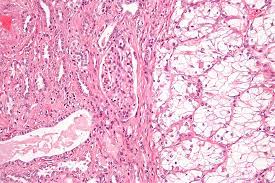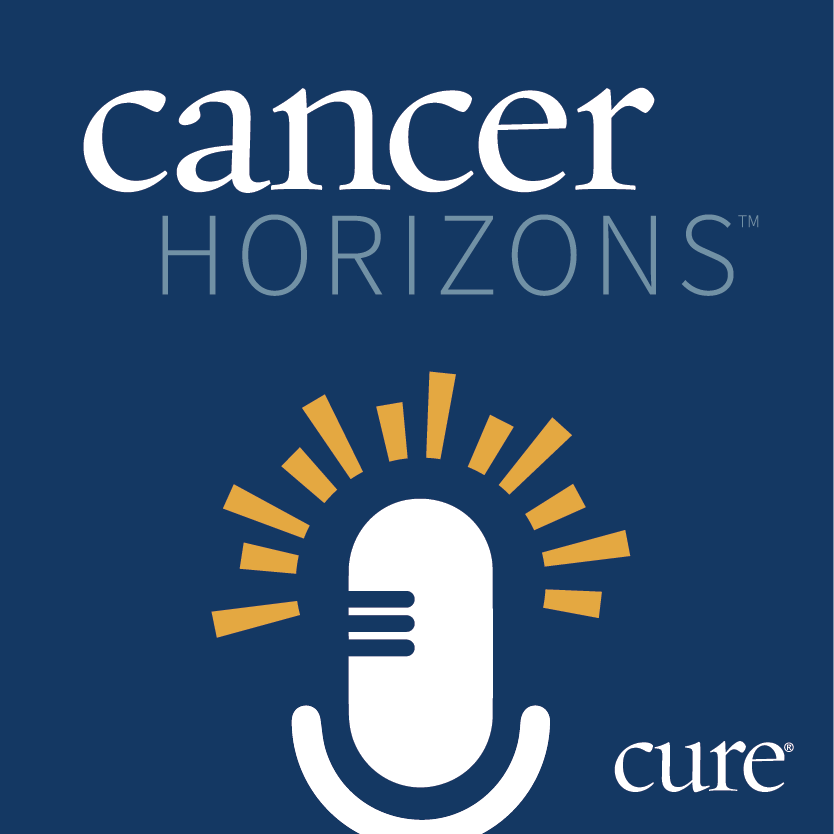News
Article
Zanzalintinib Is Promising in Clear-Cell Advanced Renal Cell Carcinoma
Author(s):
Patients with advanced clear cell renal cell carcinoma treated with zanzalintinib had experienced promising antitumor activity with manageable toxicity regardless of prior treatment with cabozantinib.

The novel drug, zanzalintinib (XL092), showed promising cancer-fighting abilities in patients with advanced clear-cell renal cell carcinoma (ccRCC), according to initial results from the STELLAR-001 clinical trial.
According to trial results, which were presented at the 2023 International Kidney Cancer Symposium, antitumor activity was observed in patients regardless of whether they were previously treated with Cabometyx (cabozantinib). Most patients in both groups (those who did get Cabometyx or those who did not) achieved disease control.
“In STELLAR-001, we saw zanzalintinib had significant antitumor activity in patients with heavily pretreated disease,” Dr. Sumanta Kumar Pal, professor of the department of medical oncology and therapeutics research at City of Hope Comprehensive Cancer Center in Duarte, California, said during the presentation. “I think there's a certain uniqueness to this amongst the existing landscape of VEGF TKIs with respect to both clinical activity with responses that we're seeing with subsequent use in advanced patients, and also with respect to the safety profile for therapy.”
Findings presented at the meeting focused on single-agent zanzalintinib in patients with ccRCC, including the assessment of outcomes categorized by prior exposure to Cabometyx.
“It’s well known to this audience that VEGF TKIs, including (Cabometyx), really represent a cornerstone of therapy for advanced renal cell carcinoma,” Pal noted.
Zanzalintinib is a novel tyrosine kinase inhibitor, a type of drug that works by blocking certain enzymes that help cancer cells grow and survive. Specifically, the drug targets VEGFR, MET and TAM kinases.
“We’ve hypothesized that because of its short half-life, (zanzalintinib) may have improved tolerability,” Pal said during the presentation. “VEGF receptors, MET and TAM kinases are involved in tumor growth, angiogenesis, and immunosuppression within the tumor microenvironment. And we believe that targeting MET and the TAM kinases, in addition to VEGF receptors, may potentially prevent resistance to VEGF receptor inhibition.”
Researchers analyzed data from 32 adult patients with advanced, metastatic, or recurrent ccRCC and those with sarcomatoid featured were permitted. Patients also had to have an ECOG score of 1 or 0, indicating that they can perform all or most of their daily tasks independently; had inoperable, locally advanced or metastatic disease; and had previously received one to three prior systemic anticancer therapies. Patients in this ccRCC expansion cohort were treated with a 100-mg daily dose of zanzalintinib.
The main goals of this study included objective response rate (ORR; percentage of patients whose disease shrinks or disappears from treatment) and progression-free survival (PFS; time from treatment until disease worsening or death) at six months per RECIST v1.1 by investigator. The secondary end point was safety, with exploratory end points including PFS and duration of response (DOR) per RECIST v1.1 by investigator, in addition to overall survival (OS; time from treatment until death of any cause).
Pal noted that the age and gender distribution of patients in this study were typical for those in the RCC population, with a median age of 64 years (range, 39-74) and 72% men. Eighty-one percent of patients had intermediate risk disease.
“The patient characteristics here really suggest a bit of an aggressive phenotype within this cohort; 38% and 34% of patients included in this cohort had liver and bone metastases,” Pal said.
He also pointed out that 41% of patients had received at least three prior lines of therapy, 97% of patients received prior immune checkpoint inhibitors and 81% of patients had received prior VEGF TKIs, with more than half of patients previously receiving Cabometyx.
The ORR was 38% in this group of patients, of which Pal noted that he was “impressed to see, … with this sort of aggressive overall phenotype achieving very deep responses to therapy.” Patients had a disease control rate of 88%. When highlighting just the patients previously treated with Cabometyx, they had an overall response rate of 24% and a disease control rate of 94%. For patients who were not previously treated with Cabometyx, the response rate was 57% with a disease control rate of 86%.
Researchers also assessed responses in approximately 80% of patients that had received prior VEGF TKIs. When Cabometyx was included, the response rate was 35% with a disease control rate of 92%. Once Cabometyx was excluded, the response rate was 63% and all patients achieved disease control.
“Importantly, three of the four (Cabometyx)-exposed patients who responded to zanzalintinib had actually discontinued prior cabozantinib on account of prior disease progression on (Cabometyx),” Pal said during the presentation.
The median DOR for Cabometyx-naive patients (14 patients) was 7.4 months, whereas it was not yet achieved in patients who were exposed to Cabometyx (17 patients), indicating that not enough patients had stopped responding for the researchers to calculate an average. At a median follow-up of 8.3 months (range, 5.7-13.7), half of the patients were continuing treatment and 75% of responses occurred at the first post-baseline tumor assessment. Pal noted that this included all responders who had previously received Cabometyx therapy.
Safety was assessed in 81 patients in the safety population and compared with the 32 patients in the ccRCC cohort. The median exposure to treatment was similar in both groups (6.8 months vs 6.4 months, respectively). No grade 4/5 (severe or fatal) treatment-related side effects occurred with zanzalintinib therapy in both groups of patients in this analysis.
In the ccRCC cohort, dose modifications occurred in 56% of patients, whereas dose holds occurred in 84% of those in this group. These rates were 53% and 80%, respectively, in the safety population. Discontinuation for treatment-related side effects occurred in 9% of patients in the ccRCC cohort and in 12% in the safety cohort.
“One of the things I'll point out is that the rates of diarrhea, hypertension, asthenia, side effects that we've become accustomed to amongst TKI strategies appear to be a bit lower with zanzalintinib, particularly with respect to grade 3/4 side effects,” Pal said. “In particular, the rates of stomatitis and hand-foot syndrome, in my opinion, were particularly low.”
Pal noted at the end of the presentation that zanzalintinib is currently being evaluated in different combinations with immune checkpoint inhibitors in both the first- and second-line setting, in addition to a phase III trial assessing zanzalintinib with Opdivo (nivolumab) in patients with previously untreated non-ccRCC.
“These findings underscore the potential zanzalintinib may hold for patients with refractory kidney cancer, including those who have previously progressed on (Cabometyx),” Dr. Amy Peterson, executive vice president of product development and medical affairs and chief medical officer of Exelixis, said in a news release from the pharmaceutical company that manufacturers zanzalintinib. “As STELLAR-001 and our phase 3 STELLAR trials progress, we look forward to elucidating the potential of zanzalintinib in kidney cancer, as well as in other advanced solid tumors.”
For more news on cancer updates, research and education, don’t forget to subscribe to CURE®’s newsletters here.




